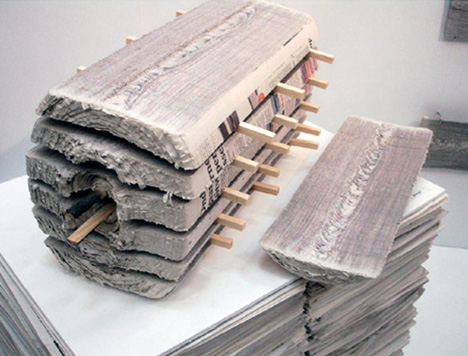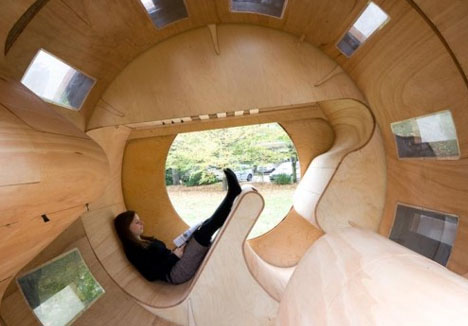SamenvattingKeramiek is een materiaal dat ontstaat door het versmelten, ofwel
sinteren, van poeder tot een extreem hard en vaak extreem glad
materiaal. Omdat in het poederstadium allerlei stoffen gemengd
kunnen worden, kan keramiek voor uiteenlopende toepassingen
gebruikt worden: om te isoleren, maar ook om juist sterk warmtegeleidend
of glad te zijn.
Onderzoekers aan het Forschungszentrum Jülich (FZJ) doen met name
onderzoek aan de hittebestendigheid van keramiek en hebben een
speciale techniek ontwikkeld om hele dunne laagjes keramiek op een
oppervlak aan te brengen, waardoor een isolerende laag ontstaat die
het onderliggende materiaal beschermt. De techniek, 'atmosferisch
plasmaspuiten', kan ook voor andere doeleinden gebruikt worden,
namelijk om multifunctionele dunne laagjes op elkaar te bevestigen.
Een voorbeeld van de toepassing van het isolerende effect van
atmosferisch plasmaspuiten is de isolatie van rotorbladen in een
vliegtuigstraalmotor. Een voorbeeld van de toepassing van multifunctionele
keramische dunne lagen is de ontwikkeling van een hoge
temperatuur-brandstofcel (APS-SOFC). Ook wat meer alledaagse en
industriële toepassingen komen in dit artikel aan de orde.
Details
In de kern genomen kan van keramiek gezegd worden dat het een relatief
eenvoudig materiaal is. Keramiek ontstaat door het bij hoge temperatuur
versmelten van losse poederdeeltjes (sinteren), en het is een enorm sterk
materiaal dat allerlei toepassingen kent. Keramiek en porselein kennen
we allemaal van kopjes en schoteltjes of wc-potten, maar de toepassingen
ervan in industriële omgevingen zijn veel minder bekend.
De DKG (Deutsche Keramische Gesellschaft) verstaat onder keramiek in
principe 'alle niet-metallurgische anorganische stoffen die via de
poeder-sinter-techniek tot stand gebracht kunnen worden'. Maar
tegenwoordig worden ook combinaties van keramische stoffen gecombineerd
met andere stoffen tot keramiek gerekend: zo ontstaat dan ook
terminologie als 'geleidend keramiek', of 'keramische magneten'.
De website van de DKG lijkt op het eerste gezicht voornamelijk een
portaal om subsidies en interessante onderzoeksaanvragen te zoeken,
maar de DKG levert ook zeer degelijke achtergrondinformatie over de
mogelijkheden van keramiek.
HittebestendigheidRollsRoyce heeft onder de rook van Berlijn een grote fabriek voor
vliegtuigmotoren staan. Temperaturen in een vliegtuigmotor kunnen al
gauw oplopen tot boven de 1200 graden Celsius. Deze hoge temperaturen
beïnvloeden de levensduur van de motoren sterk negatief. Elke
vorm van bescherming tegen een te hoge temperatuur is dus
meegenomen. Het ForschungZentrum Jülich (FZJ) bij Aken heeft een
onderzoeksprogramma waar hittebestendige keramische dunne lagen
van ongeveer 300 μm dik aangebracht kunnen worden, bijvoorbeeld op
de bladen van een vliegtuigstraalmotor. Het aanbrengen is een
hoogstandje dat vrijwel niemand in de wereld beheerst, behalve FZJ.
De gebruikte techniek heet atmosferisch plasmaspuiten. Deze techniek
komt neer op het onder druk brengen van een brandbaar gasmengsel
samen met het keramische poeder. Als dit mengsel uit een branderopening
stroomt en aangestoken wordt, wordt tegelijkertijd het keramiekpoeder
gesmolten en op het te bespuiten oppervlak aangebracht.
Omdat het atmosferisch plasmaspuiten afhankelijk is van turbulente
verbrandingsprocessen ontstaat een niet-perfect glad oppervlak
(zie figuur 1).
Bij FZJ wordt als keramisch poeder voor het fabriceren van een dunne
laag hittebestendig keramiek yttriumoxide-gestabiliseerd zirkoniumoxide
(YSZ) gebruikt.









































